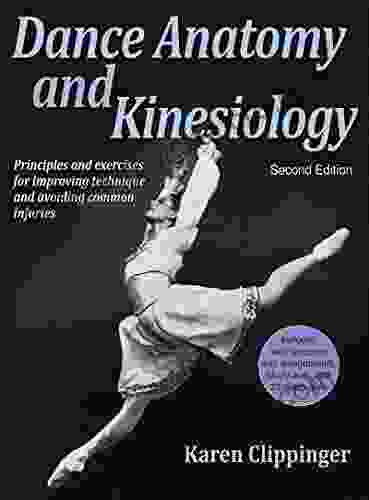Dance Anatomy and Kinesiology: Understanding the Body's Movements

Dance, an expressive form of art, demands intricate coordination and a deep understanding of body mechanics. Dance anatomy and kinesiology, two intertwined disciplines, play a crucial role in enhancing dancers' performance, preventing injuries, and facilitating efficient movement. This comprehensive article delves into the fundamentals of dance anatomy, kinesiology, and their practical applications in the world of dance.
Dance Anatomy: Exploring the Dancer's Body
Dance anatomy focuses on the musculoskeletal system, examining the bones, muscles, and joints involved in dance movements. Understanding the body's structure provides dancers with a foundation for mindful movement and injury prevention.
4.7 out of 5
| Language | : | English |
| File size | : | 21526 KB |
| Text-to-Speech | : | Enabled |
| Screen Reader | : | Supported |
| Enhanced typesetting | : | Enabled |
| Print length | : | 993 pages |
| Lending | : | Enabled |
Skeletal System
The skeletal system, comprising bones, forms the framework of the body. Dancers need to be aware of the bones' location, shape, and function. Major bones involved in dance include:
- Pelvis: A large, bowl-shaped bone that connects the spine to the legs.
- Vertebral Column: A series of bones stacked vertically to form the spine, providing support and flexibility.
- Femur (Thigh Bone): The longest bone in the body, connecting the pelvis to the knee.
- Tibia and Fibula (Lower Leg Bones): Parallel bones that form the lower leg.
- Talus, Calcaneus, and Metatarsals (Foot Bones): Bones that make up the ankle, heel, and toes.
Muscular System
Muscles, the engines of movement, generate the force needed for dance steps. Dancers must know the location, function, and common imbalances of major muscle groups:
- Gluteus Maximus: A powerful muscle that extends (straightens) the hip.
- Hamstrings: A group of muscles on the back of the thigh that flex (bend) the knee.
- Quadriceps: Muscles on the front of the thigh that extend the knee.
- Calves: Muscles on the back of the lower leg that plantarflex (point the foot downward).
- Adductors: Muscles that bring the legs together.
Joints
Joints connect bones, allowing for a wide range of movements. Dancers need to understand the types, degrees of freedom, and potential limitations of joints:
- Hip Joint: A ball-and-socket joint that allows for flexion, extension, abduction (moving the leg away from the body),and rotation.
- Knee Joint: A hinge joint that allows for flexion and extension.
- Ankle Joint: A hinge joint that allows for dorsiflexion (lifting the foot upward) and plantarflexion.
Kinesiology: Unlocking the Mechanics of Movement
Kinesiology, the study of human movement, analyzes the forces, lever systems, and muscle actions involved in dance. This knowledge helps dancers optimize their techniques, improve balance, and reduce the risk of injuries.
Forces
Forces are external and internal factors that influence body motion. Dancers encounter various forces, including:
- Gravity: A downward force that pulls objects towards the ground.
- Inertia: A force that resists any change in motion.
- Tension: A force created by muscles pulling against each other.
Lever Systems
The body can be viewed as a series of levers, with bones acting as levers, muscles as effort, and joints as fulcrums. Understanding lever systems helps dancers analyze movements and manipulate forces efficiently.
Muscle Actions
Muscles perform various actions, including:
- Concentric: Shortening of the muscle, pulling the bones together.
- Eccentric: Lengthening of the muscle, resisting movement in the opposite direction.
- Isometric: Maintaining muscle tension without movement.
Practical Applications of Dance Anatomy and Kinesiology
Injury Prevention
Dance anatomy and kinesiology provide dancers with a solid foundation for injury prevention. By understanding their body's mechanics, dancers can identify potential risks and adjust their technique accordingly. For instance, understanding the anatomy of the ankle joint and the biomechanics of pointe work helps in preventing ankle sprains.
Technical Improvement
Dance anatomy and kinesiology empower dancers to analyze and refine their technique. Kinesiological principles guide dancers in optimizing their alignment, balance, and coordination. For example, understanding the lever system of the hip joint enhances the efficiency of turns and jumps.
Choreography
Dance anatomy and kinesiology inform choreographic choices. Choreographers can design movements that are not only visually appealing but also safe and anatomically sound. Understanding the body's limits and potential helps in creating dynamic and expressive dance pieces.
Dance anatomy and kinesiology are indispensable disciplines that enhance the performance, safety, and artistry of dancers. By exploring the body's structure and mechanics, dancers gain a deeper understanding of their instrument, enabling them to move with confidence, grace, and efficiency. Whether they are aspiring performers, teachers, or choreographers, mastering these disciplines is a fundamental step towards a fulfilling and injury-free dance journey.
4.7 out of 5
| Language | : | English |
| File size | : | 21526 KB |
| Text-to-Speech | : | Enabled |
| Screen Reader | : | Supported |
| Enhanced typesetting | : | Enabled |
| Print length | : | 993 pages |
| Lending | : | Enabled |
Do you want to contribute by writing guest posts on this blog?
Please contact us and send us a resume of previous articles that you have written.
 Fiction
Fiction Non Fiction
Non Fiction Romance
Romance Mystery
Mystery Thriller
Thriller SciFi
SciFi Fantasy
Fantasy Horror
Horror Biography
Biography Selfhelp
Selfhelp Business
Business History
History Classics
Classics Poetry
Poetry Childrens
Childrens Young Adult
Young Adult Educational
Educational Cooking
Cooking Travel
Travel Lifestyle
Lifestyle Spirituality
Spirituality Health
Health Fitness
Fitness Technology
Technology Science
Science Arts
Arts Crafts
Crafts DIY
DIY Gardening
Gardening Petcare
Petcare Emma Lord
Emma Lord Edward Rosenfeld
Edward Rosenfeld Deepak Chopra
Deepak Chopra James Diego Vigil
James Diego Vigil P G Maxwell Stuart
P G Maxwell Stuart Tyler Vanderweele
Tyler Vanderweele John Green
John Green Jiichi Watanabe
Jiichi Watanabe Liesbet Collaert
Liesbet Collaert Ricki E Kantrowitz
Ricki E Kantrowitz Jozef Nauta
Jozef Nauta Iris Bohnet
Iris Bohnet Theodore X O Connell
Theodore X O Connell Dalai Lama
Dalai Lama John A Yoegel
John A Yoegel Elizabeth Bradfield
Elizabeth Bradfield David Cheng
David Cheng Kelly Slater
Kelly Slater Gregory A Boyd
Gregory A Boyd Jessica Shortall
Jessica Shortall Jonathan Ross
Jonathan Ross J Michael Leger
J Michael Leger Mauricio Cabrini
Mauricio Cabrini Debra Barnes
Debra Barnes Richard Bromfield
Richard Bromfield Bree Moore
Bree Moore Gregory J Privitera
Gregory J Privitera Lesli Richards
Lesli Richards Maureen Johnson
Maureen Johnson Bruce Watson
Bruce Watson Collins Gcse
Collins Gcse Bookrags Com
Bookrags Com Katie J Trent
Katie J Trent Jd Brown
Jd Brown Brian Thompson
Brian Thompson Dr Danny Penman
Dr Danny Penman Andrew Maraniss
Andrew Maraniss Jong Chul Ye
Jong Chul Ye Mike Tyson
Mike Tyson Russell Miller
Russell Miller Manuel De La Cruz
Manuel De La Cruz Patricia O Quinn
Patricia O Quinn Chris Lehto
Chris Lehto John Gribbin
John Gribbin Sandra Mizumoto Posey
Sandra Mizumoto Posey Theresa Cheung
Theresa Cheung Jeremy Desilva
Jeremy Desilva Suzie Cooney
Suzie Cooney Cassandra Johnson
Cassandra Johnson Grant Thompson
Grant Thompson Jasmine Greene
Jasmine Greene Bruno Latour
Bruno Latour Dervla Murphy
Dervla Murphy Diamond Wilson
Diamond Wilson Billie Jean King
Billie Jean King 2nd Edition Kindle Edition
2nd Edition Kindle Edition Mimi Lemay
Mimi Lemay Richard Adams
Richard Adams Kristine Setting Clark
Kristine Setting Clark Bill Reif
Bill Reif Kekla Magoon
Kekla Magoon Leon Anderson
Leon Anderson Tim R Wolf
Tim R Wolf 50minutos Es
50minutos Es Robert Ferguson
Robert Ferguson Bernard Cornwell
Bernard Cornwell Robert Thurston
Robert Thurston Tom Pyszczynski
Tom Pyszczynski Juno Dawson
Juno Dawson Jon Dunn
Jon Dunn Theodor W Adorno
Theodor W Adorno Donna M Mertens
Donna M Mertens Elizabeth Sims
Elizabeth Sims Terence Grieder
Terence Grieder Sam Goulden
Sam Goulden Robert Mcentarffer
Robert Mcentarffer Claire Baker
Claire Baker George Pendle
George Pendle Andre Norton
Andre Norton Josh Mulvihill
Josh Mulvihill 3rd Ed Edition Kindle Edition
3rd Ed Edition Kindle Edition Kerri Maniscalco
Kerri Maniscalco Nathalie Dupree
Nathalie Dupree Greta Solomon
Greta Solomon Allan Mundsack
Allan Mundsack Debra Pascali Bonaro
Debra Pascali Bonaro Miko Flohr
Miko Flohr L S Boos
L S Boos Alessa Ellefson
Alessa Ellefson Pat Dorsey
Pat Dorsey Prerna Lal
Prerna Lal William A Dembski
William A Dembski Duy Tran
Duy Tran Karen Myers
Karen Myers Dan Blackburn
Dan Blackburn Andrew Weber
Andrew Weber Lj Rivers
Lj Rivers Riddleland
Riddleland Neal Bascomb
Neal Bascomb James D Long
James D Long Eva Feder Kittay
Eva Feder Kittay Lin Pardey
Lin Pardey Michael W Ford
Michael W Ford 6th Edition Kindle Edition
6th Edition Kindle Edition Erika Bornman
Erika Bornman Paul Martin
Paul Martin Eric Haseltine
Eric Haseltine Dave Gerr
Dave Gerr Natalie Smith
Natalie Smith Geri Ann Galanti
Geri Ann Galanti Dr Katayune Kaeni
Dr Katayune Kaeni Mark Hatmaker
Mark Hatmaker Christy Jordan
Christy Jordan Freda Mcmanus
Freda Mcmanus Christopher Lakeman
Christopher Lakeman Syougo Kinugasa
Syougo Kinugasa Patrick Viafore
Patrick Viafore John Gookin
John Gookin Chris I Naylor
Chris I Naylor Adam Silvera
Adam Silvera Jay Cassell
Jay Cassell Nikki Grimes
Nikki Grimes Joseph E Garland
Joseph E Garland Alan Jacobs
Alan Jacobs Andrew G Marshall
Andrew G Marshall Lois Duncan
Lois Duncan Terence N D Altroy
Terence N D Altroy Garrett Grolemund
Garrett Grolemund John Iceland
John Iceland Andrea Wulf
Andrea Wulf Hong Chen
Hong Chen Carol Stock Kranowitz
Carol Stock Kranowitz Michael Geheran
Michael Geheran Subsequent Edition Kindle Edition
Subsequent Edition Kindle Edition Jean Clottes
Jean Clottes Leigh Calvez
Leigh Calvez Peter Cossins
Peter Cossins Paul Johnson
Paul Johnson G I Gurdjieff
G I Gurdjieff Bryan Smith
Bryan Smith Kevin Paul
Kevin Paul Patrick Lange
Patrick Lange Thomas R Baechle
Thomas R Baechle Janet Sasson Edgette
Janet Sasson Edgette Mohamed Elgendy
Mohamed Elgendy Keith Siragusa
Keith Siragusa Porter Fox
Porter Fox Paul Deepan
Paul Deepan Cindy Kennedy
Cindy Kennedy Susan Walker
Susan Walker Peter Dewhurst
Peter Dewhurst Thomas Wentworth Higginson
Thomas Wentworth Higginson Temple Grandin
Temple Grandin Monica Sorrenson
Monica Sorrenson Roselyn Teukolsky
Roselyn Teukolsky Patricia Moore Pastides
Patricia Moore Pastides J Morgan Mcgrady
J Morgan Mcgrady Ziemowit Wojciechowski
Ziemowit Wojciechowski Lars Behnke
Lars Behnke David Simkins
David Simkins Jillian Dodd
Jillian Dodd Icon Digital Publishing
Icon Digital Publishing John Coleman
John Coleman Robert Bauval
Robert Bauval Edward Frenkel
Edward Frenkel Leslie Leyland Fields
Leslie Leyland Fields Mark Brazil
Mark Brazil Gregory Collins
Gregory Collins Tom Mchale
Tom Mchale Jenifer Fox
Jenifer Fox Roger Gordon
Roger Gordon Michael S Gazzaniga
Michael S Gazzaniga Dan Falk
Dan Falk Seymour Simon
Seymour Simon Andrew Collins
Andrew Collins Chris Dietzel
Chris Dietzel 1st Ed 2016 Edition Kindle Edition
1st Ed 2016 Edition Kindle Edition Bonnie Scott
Bonnie Scott Raymond H Thompson
Raymond H Thompson Sloane Mcclain
Sloane Mcclain Margaret Littman
Margaret Littman Sam Irwin
Sam Irwin Karl Morris
Karl Morris 50minutes Com
50minutes Com Jim Burns
Jim Burns Jamie Hand
Jamie Hand E Bruce Goldstein
E Bruce Goldstein Tasha Dunn
Tasha Dunn Bob Welch
Bob Welch Kate Spencer
Kate Spencer Meik Wiking
Meik Wiking Robert S Mueller
Robert S Mueller Robert Venditti
Robert Venditti Patricia Stevens
Patricia Stevens John Kreiter
John Kreiter Andy Charalambous
Andy Charalambous 3rd Edition Kindle Edition
3rd Edition Kindle Edition Brenda Dehaan
Brenda Dehaan 2012th Edition Kindle Edition
2012th Edition Kindle Edition Ellen Levitt
Ellen Levitt Nancy Keene
Nancy Keene Patrick E Mcgovern
Patrick E Mcgovern Apsley Cherry Garrard
Apsley Cherry Garrard Gina Rae La Cerva
Gina Rae La Cerva Bobby Blair
Bobby Blair Joseph Chilton Pearce
Joseph Chilton Pearce A C Grayling
A C Grayling Barnett Rich
Barnett Rich John Collins
John Collins Michael Romano
Michael Romano Sarah Templeton
Sarah Templeton Ellen Sue Turner
Ellen Sue Turner Louis Stanislaw
Louis Stanislaw Richard Ania
Richard Ania William Regal
William Regal Muata Ashby
Muata Ashby Marisha Pessl
Marisha Pessl 2005th Edition Kindle Edition
2005th Edition Kindle Edition 1st English Ed Edition Kindle Edition
1st English Ed Edition Kindle Edition Peter Wohlleben
Peter Wohlleben Aly Madhavji
Aly Madhavji Justine Brooks Froelker
Justine Brooks Froelker Heather Demetrios
Heather Demetrios Breanna Lam
Breanna Lam James Mcnicholas
James Mcnicholas Tony Horton
Tony Horton Rifujin Na Magonote
Rifujin Na Magonote Al Ford
Al Ford Monte Burch
Monte Burch Anthony Arvanitakis
Anthony Arvanitakis Ernest Shackleton
Ernest Shackleton David Beaupre
David Beaupre Bertolt Brecht
Bertolt Brecht Justin Doyle
Justin Doyle Christopher Mcdougall
Christopher Mcdougall Janetti Marotta
Janetti Marotta Carl J Sindermann
Carl J Sindermann Mark V Wiley
Mark V Wiley Martha Menchaca
Martha Menchaca Nathan Jendrick
Nathan Jendrick Josh Elster
Josh Elster Mei Fong
Mei Fong 006 Edition Kindle Edition
006 Edition Kindle Edition Tony Hernandez Pumarejo
Tony Hernandez Pumarejo Mitch Rubman
Mitch Rubman Claire Sierra
Claire Sierra Sherry Monahan
Sherry Monahan Tok Hui Yeap Rd Csp Ld
Tok Hui Yeap Rd Csp Ld Mary H K Choi
Mary H K Choi Kenny Casanova
Kenny Casanova Evan Brashier
Evan Brashier Rowan Ricardo Phillips
Rowan Ricardo Phillips Chase Williams
Chase Williams Chris Froome
Chris Froome Marcia Verduin
Marcia Verduin Gianni La Forza
Gianni La Forza Gary S Thorpe
Gary S Thorpe Greg Midland
Greg Midland Edyta Roszko
Edyta Roszko Don Fink
Don Fink Deanne Howell
Deanne Howell Alden Jones
Alden Jones Aubrey Clayton
Aubrey Clayton Lewis Henry Morgan
Lewis Henry Morgan Eli Boschetto
Eli Boschetto George W E Nickelsburg
George W E Nickelsburg Raymond Buckland
Raymond Buckland Eric Dominy
Eric Dominy Laurie Forest
Laurie Forest Joe Oliver
Joe Oliver Oscar Wegner
Oscar Wegner Tami Lynn Kent
Tami Lynn Kent Diane Duane
Diane Duane Kelly Skeen
Kelly Skeen Nnedi Okorafor
Nnedi Okorafor Ulla Sarmiento
Ulla Sarmiento Harry Middleton
Harry Middleton Amy Chua
Amy Chua Kerry Fraser
Kerry Fraser Brennan Barnard
Brennan Barnard Claudio De Castro
Claudio De Castro Jack M Bloom
Jack M Bloom Amy Ogle
Amy Ogle Stewart Smith
Stewart Smith Jacqueeia Ferguson
Jacqueeia Ferguson Robert A Johnson
Robert A Johnson Natasha Preston
Natasha Preston Rick Gurnsey
Rick Gurnsey Sadie Radinsky
Sadie Radinsky Christa Orecchio
Christa Orecchio A Digger Stolz
A Digger Stolz Brian Kent
Brian Kent Steve Magness
Steve Magness Howard Mudd
Howard Mudd Jason Miller
Jason Miller Naomi Feil
Naomi Feil Gershon Ben Keren
Gershon Ben Keren Miranda Castro
Miranda Castro Kennedy Achille
Kennedy Achille Jason Curtis
Jason Curtis Stefan Hofer
Stefan Hofer Starley Talbott
Starley Talbott Terrence Real
Terrence Real 8th Edition Kindle Edition
8th Edition Kindle Edition Daphne Adler
Daphne Adler 4th Edition Kindle Edition With Audio Video
4th Edition Kindle Edition With Audio Video 7th Edition Kindle Edition
7th Edition Kindle Edition Tom Lyons
Tom Lyons Jeffrey A Greene
Jeffrey A Greene A Christine Harris
A Christine Harris Alec Crawford
Alec Crawford Charles Seife
Charles Seife Emma Dalton
Emma Dalton Betty Crocker
Betty Crocker Lenora Ucko
Lenora Ucko Steven D Levitt
Steven D Levitt Marty Bartholomew
Marty Bartholomew Eloise Jarvis Mcgraw
Eloise Jarvis Mcgraw J D Salinger
J D Salinger Marie Louise Von Franz
Marie Louise Von Franz Simon G Thompson
Simon G Thompson Jo Frost
Jo Frost Dan Wingreen
Dan Wingreen Z Justin Ren
Z Justin Ren Heather Job
Heather Job Elizabeth D Hutchison
Elizabeth D Hutchison Joe Chilson
Joe Chilson Filipe Masetti Leite
Filipe Masetti Leite Elaine Beaumont
Elaine Beaumont Nick Winkelman
Nick Winkelman Patrick Hunt
Patrick Hunt Barbara Klein
Barbara Klein Lucas Whitecotton
Lucas Whitecotton Laura Bright
Laura Bright Patricia S Potter Efron
Patricia S Potter Efron Nadav Snir
Nadav Snir Skye Genaro
Skye Genaro Martin Mobraten
Martin Mobraten Micah Goodman
Micah Goodman Wong Kiew Kit
Wong Kiew Kit Michael Alvear
Michael Alvear Samantha Lovely
Samantha Lovely Jordan Ifueko
Jordan Ifueko Cynthia Bourgeault
Cynthia Bourgeault Shelby Hailstone Law
Shelby Hailstone Law Jeff Gill
Jeff Gill Susan E Cayleff
Susan E Cayleff Theris A Touhy
Theris A Touhy Linda A Roussel
Linda A Roussel Lee Smolin
Lee Smolin L Ulloque
L Ulloque Kristi K Hoffman
Kristi K Hoffman Leonardo Trasande
Leonardo Trasande Kristen Riecke
Kristen Riecke Louis Liebenberg
Louis Liebenberg 1st Edition Kindle Edition
1st Edition Kindle Edition Olszewski Marie Erin
Olszewski Marie Erin Herbert Feigl
Herbert Feigl Yan Shen
Yan Shen Jasper Godwin Ridley
Jasper Godwin Ridley 5th Edition Kindle Edition
5th Edition Kindle Edition Dominik Hartmann
Dominik Hartmann Broccoli Lion
Broccoli Lion Whit Honea
Whit Honea Max Domi
Max Domi Dinokids Press
Dinokids Press Tracy Gharbo
Tracy Gharbo Emily A Duncan
Emily A Duncan Kyla Stone
Kyla Stone Glenn N Levine
Glenn N Levine Leonard Pellman
Leonard Pellman Michael Clarke
Michael Clarke Frank Sargeant
Frank Sargeant Robert Pondiscio
Robert Pondiscio Kate Usher
Kate Usher David Lloyd Kilmer
David Lloyd Kilmer Buddy Martin
Buddy Martin Jay Wilkinson
Jay Wilkinson Manhattan Prep
Manhattan Prep Justin Hammond
Justin Hammond Dustyn Roberts
Dustyn Roberts Rashad Jennings
Rashad Jennings Lareina Rule
Lareina Rule Steve Garnett
Steve Garnett Robert K Tyson
Robert K Tyson Jacquetta Hawkes
Jacquetta Hawkes 4th Edition Kindle Edition
4th Edition Kindle Edition Melissa Cheyney
Melissa Cheyney Mark Gregston
Mark Gregston Gayle Jervis
Gayle Jervis Vibrant Publishers
Vibrant Publishers Michaela Stith
Michaela Stith Gail Craswell
Gail Craswell Robert Peter Gale
Robert Peter Gale Pamela Adams
Pamela Adams Elizabeth Wenk
Elizabeth Wenk Andrew Shapland
Andrew Shapland Christoph Delp
Christoph Delp Steve Kantner
Steve Kantner Bernard Rosner
Bernard Rosner Naomi Scott
Naomi Scott Chris Stewart
Chris Stewart Nate G Hilger
Nate G Hilger Oliver Theobald
Oliver Theobald Shonna Slayton
Shonna Slayton Geoffrey West
Geoffrey West Caroline Porter Thomas
Caroline Porter Thomas Dr Brenda Stratton
Dr Brenda Stratton John Hands
John Hands Joe Cuhaj
Joe Cuhaj L Madison
L Madison Eric I Karchmer
Eric I Karchmer Brooklyn James
Brooklyn James Fata Ariu Levi
Fata Ariu Levi Alice Ginott
Alice Ginott Jamaica Stevens
Jamaica Stevens A C Davison
A C Davison Stephen P Anderson
Stephen P Anderson Justin Bower
Justin Bower Ben Egginton
Ben Egginton Sheryl Crow
Sheryl Crow David Kushner
David Kushner Katie M John
Katie M John Clint Malarchuk
Clint Malarchuk Heather Rain Mazen Korbmacher
Heather Rain Mazen Korbmacher A R Bernard
A R Bernard
Light bulbAdvertise smarter! Our strategic ad space ensures maximum exposure. Reserve your spot today!

 Kelly BlairSouthern Recipes To Celebrate The Warmth, The Love And The Blessings Of Full...
Kelly BlairSouthern Recipes To Celebrate The Warmth, The Love And The Blessings Of Full...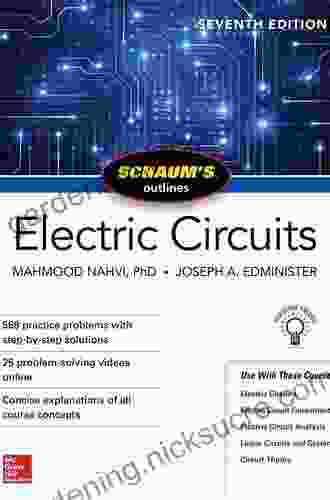
 Albert ReedSchaum's Outline of Electric Circuits, Seventh Edition: The Ultimate Guide to...
Albert ReedSchaum's Outline of Electric Circuits, Seventh Edition: The Ultimate Guide to...
 Maurice ParkerThe Ultimate Fly Fishing Guide to the South Platte River: A Comprehensive...
Maurice ParkerThe Ultimate Fly Fishing Guide to the South Platte River: A Comprehensive... Tom ClancyFollow ·5.1k
Tom ClancyFollow ·5.1k Kazuo IshiguroFollow ·5.6k
Kazuo IshiguroFollow ·5.6k Joseph ConradFollow ·13.4k
Joseph ConradFollow ·13.4k Warren BellFollow ·18.2k
Warren BellFollow ·18.2k Devin CoxFollow ·16.9k
Devin CoxFollow ·16.9k John Dos PassosFollow ·17.3k
John Dos PassosFollow ·17.3k Wade CoxFollow ·7.2k
Wade CoxFollow ·7.2k Spencer PowellFollow ·7.6k
Spencer PowellFollow ·7.6k

 Finn Cox
Finn CoxA Comprehensive Guide for Budding Inventors and Backyard...
For those with a restless mind and a...

 Forrest Reed
Forrest ReedThe Ultimate Shopper's Guide to Purchasing Weight Lifting...
Are you looking...
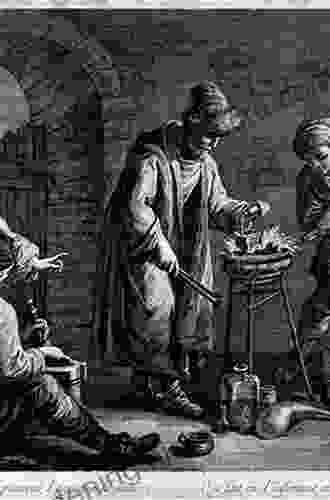
 Dillon Hayes
Dillon HayesThe Chemical Choir: Unveiling the Enchanting Symphony of...
In the enigmatic realm of science, where...
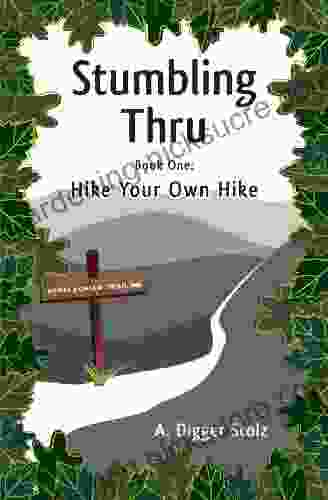
 Ryūnosuke Akutagawa
Ryūnosuke AkutagawaStumbling Thru: Hike Your Own Hike
In the realm of outdoor adventures,...
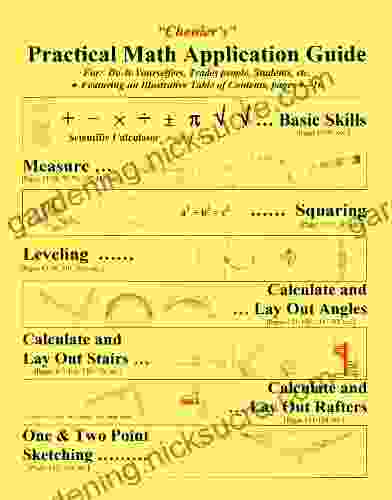
 Terry Pratchett
Terry PratchettUnlock Your Math Skills: A Comprehensive Guide to Chenier...
Math plays a vital role in...
4.7 out of 5
| Language | : | English |
| File size | : | 21526 KB |
| Text-to-Speech | : | Enabled |
| Screen Reader | : | Supported |
| Enhanced typesetting | : | Enabled |
| Print length | : | 993 pages |
| Lending | : | Enabled |


